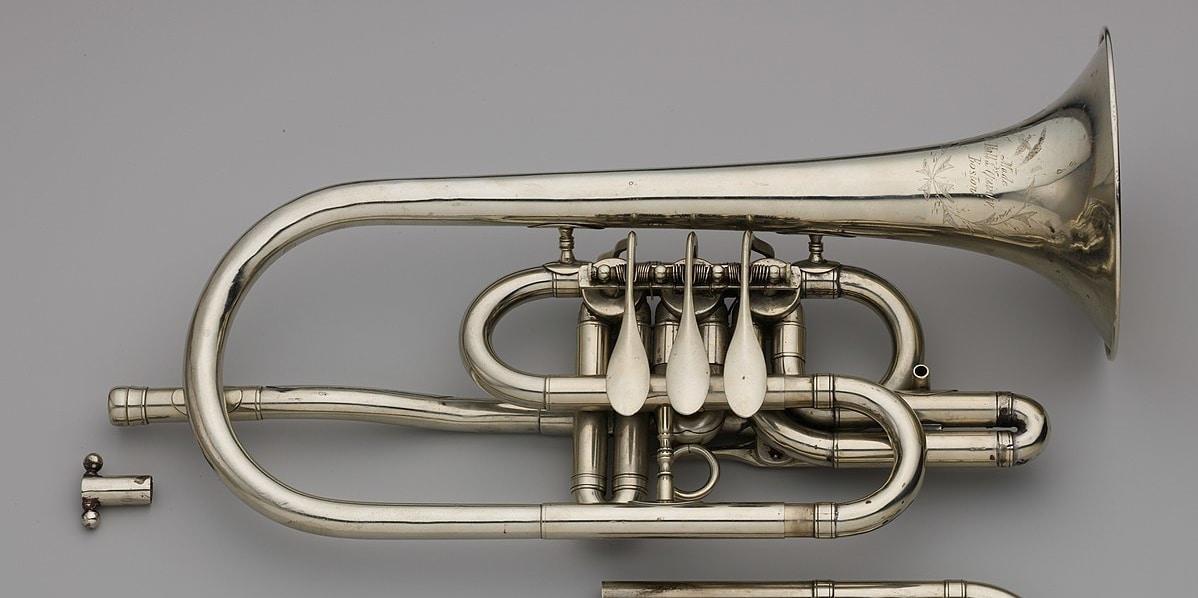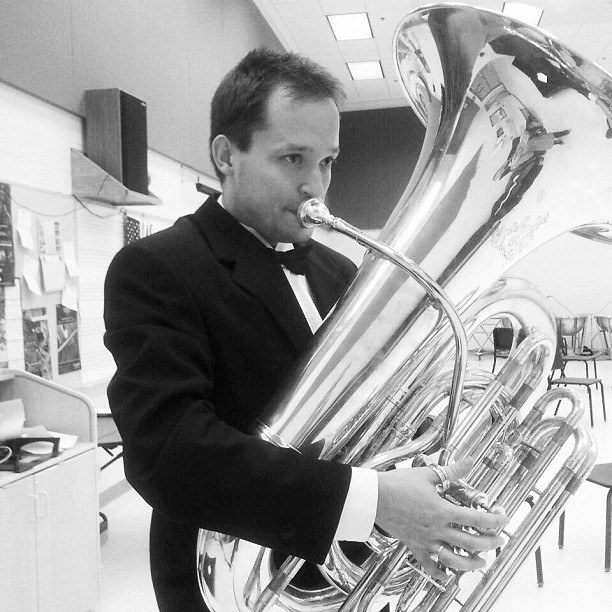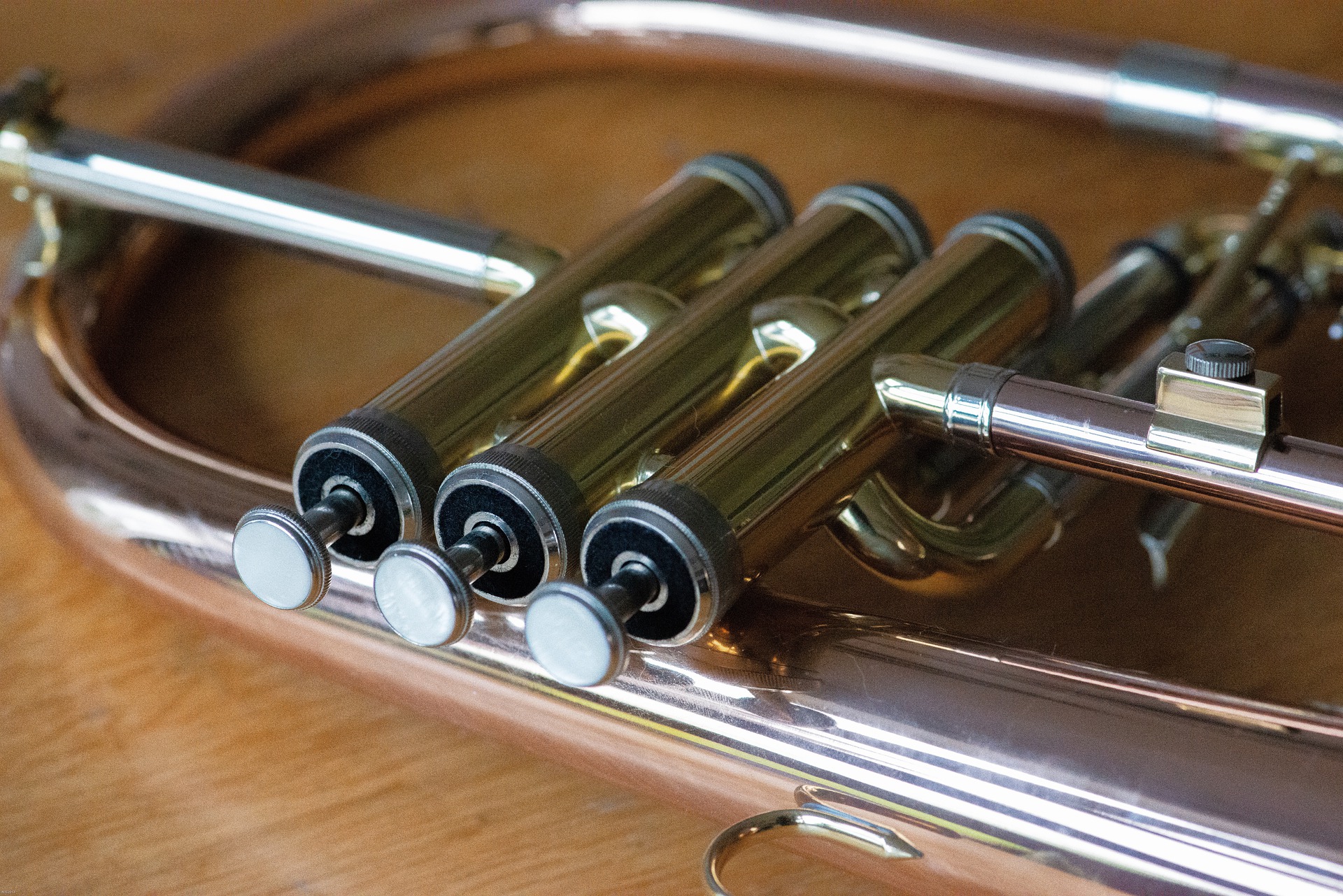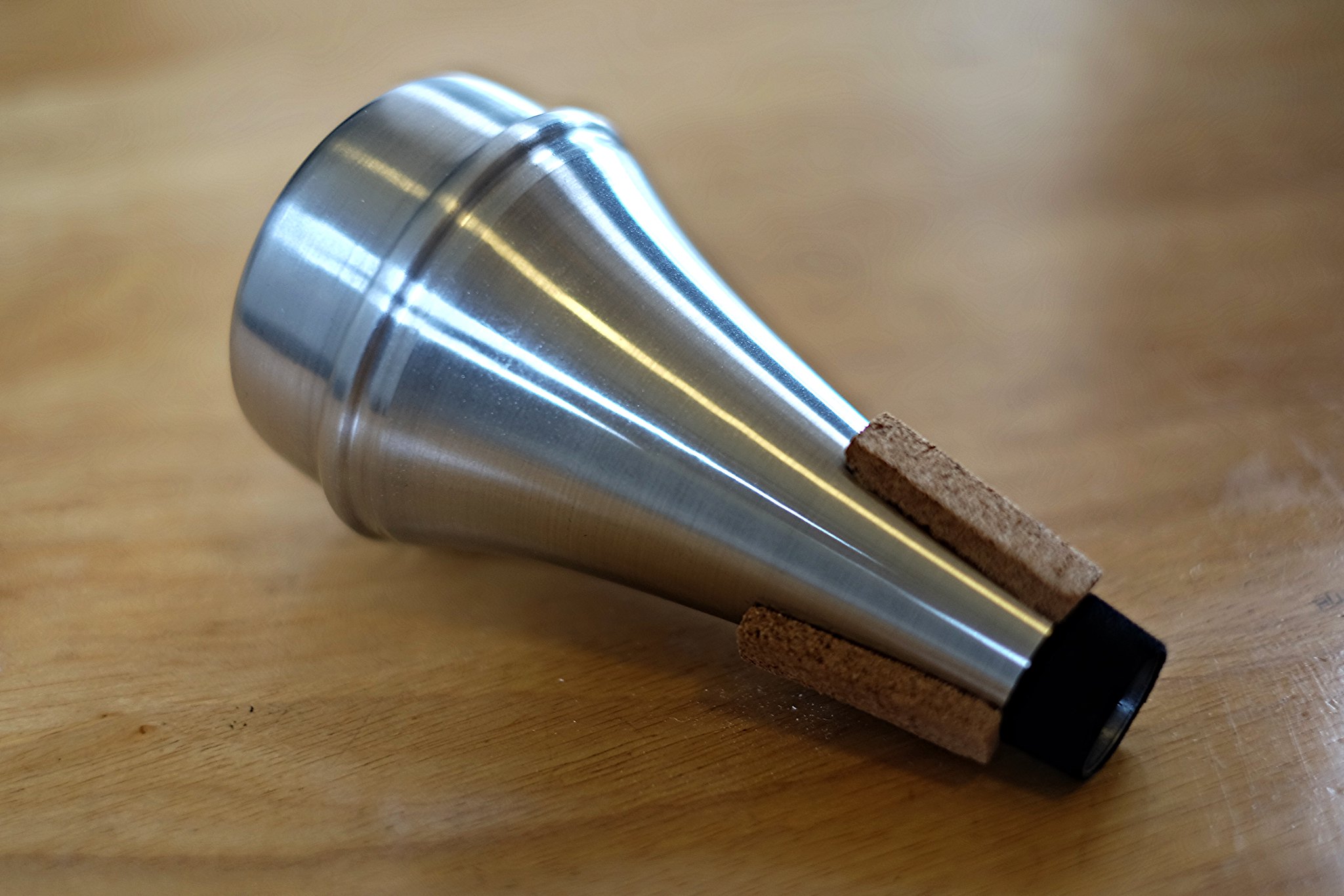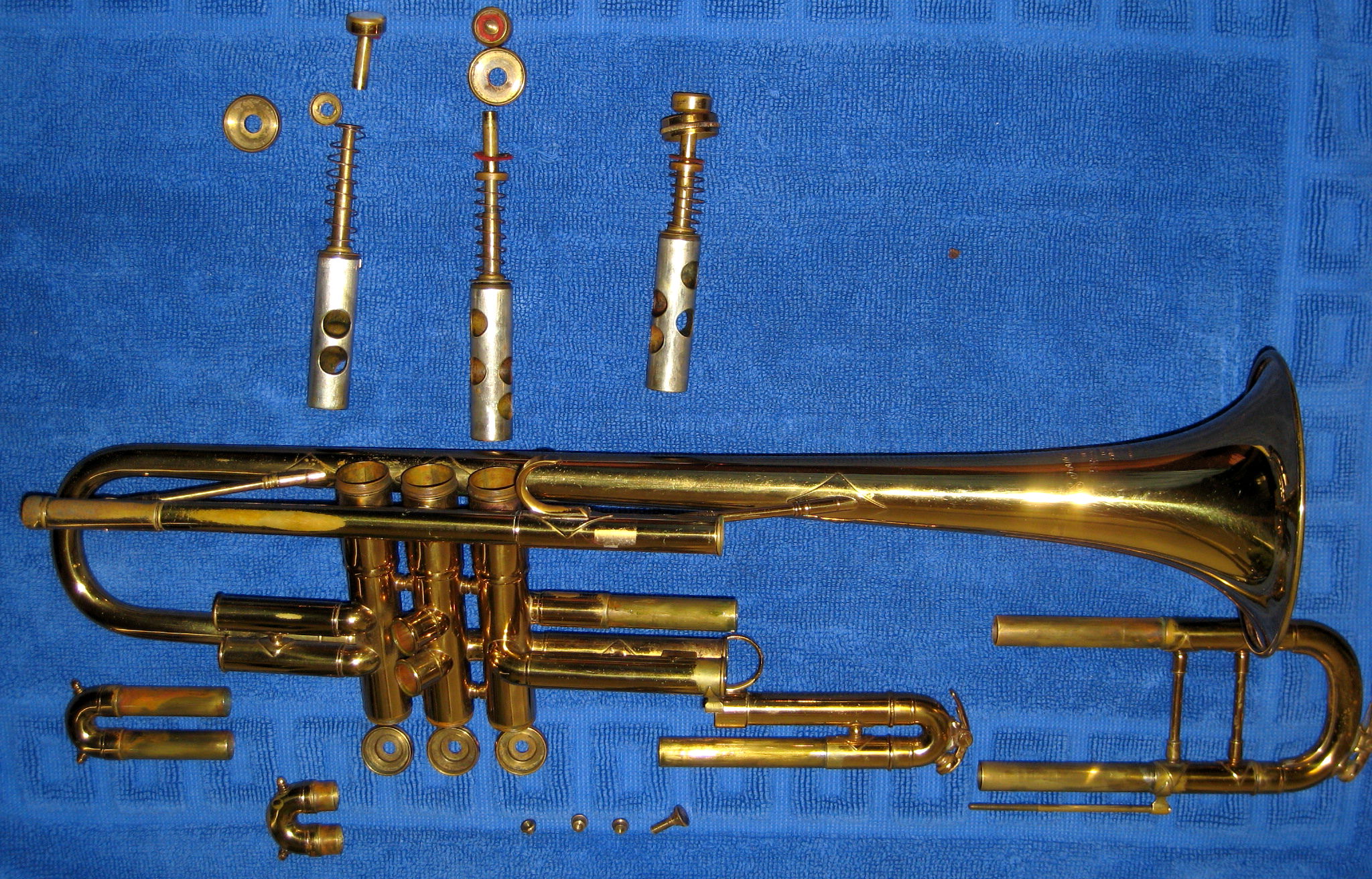In the United States, many of us are not familiar with the rotary trumpet. We have probably seen rotary tubas and French horns, but American concert bands, jazz bands, and marching bands have been heavily dominated by the piston trumpet.
In some European countries, however, rotary trumpets are the norm, and piston trumpets are less common. You may think that the instruments don't differ except by valve type, but you'll soon learn that there's more to it than just personal preference of valve orientation.
We'll take a look at the differences between these two trumpets, how to maintain a rotary valve trumpet, as well as recommendations of good rotary trumpets if you're in the market to add to your trumpet collection.
Rotary Vs. Piston Trumpets
The Physical Characteristics
On a piston trumpet, the lead pipe extends into the tuning slide which wraps around until it meets the third valve.
On the rotary trumpet, the lead pipe is much shorter and feeds immediately into the valves. Then the tuning slide exits the valves and curves around into the bell of the instrument. This affects both the responsiveness and the overall feel of the trumpet when playing.
The bore of a rotary trumpet is quite a bit smaller than it's typical piston counterpart, and narrower all the way through up until the bell, but with a greater bell flare and larger bell diameter.
Each of these differences in physical characteristics affects the overall sound and style of the instrument.
Playing Characteristics
Dr. Jack Burt, trumpet professor at the University of Maine, makes an analogy to different types of vehicles in regards to the playing style of each instrument.
"A rotary trumpet feels like a small sports car, and a piston trumpet feels like a heavy duty truck... The rotary trumpet is capable of more subtlety and color change than the piston trumpet."
One of the most significant changes when playing the rotary trumpet is how you change your air.
It can be easy to over blow a rotary trumpet, so you should focus on warm, slower air, whereas on the piston trumpet, you can be much more forceful with faster air through the horn given its larger bore.
Another change is in regards to the variety of tonal color that can be achieved on the rotary trumpet. On a piston trumpet, we are used to a fairly constant sound regardless of the part of the range we are playing in, or the volume we are playing at.
On the rotary trumpet, we can get a much mellower sound in the lower tessitura, and in the upper tessitura we can get a stronger, brighter sound.
Extra Keys
Imagine if you had a magical button on your trumpet that helped you hit high notes more accurately and had the added benefit of helping you play in tune.
How awesome would that be?!
This actually isn't too far from the truth, all magic aside, for the rotary trumpet.
One of the most interesting unique features of the rotary valve trumpet is its addition of extra keys that can be engaged by the right hand pinky. Its advantages are threefold:
-
It increases the accuracy of a given set of pitches
-
It improves intonation
-
It decreases resistance in the upper tessitura
Each of the three keys (or possibly an added fourth key) affect a given triad within the harmonic series.
The keys are as follows:
-
"Vienna C Key" / Ab Key: Eb, Ab, C, Eb
-
A Key: E, A, C#, E
-
Spit valve / Water key / Bb Key: F, Bb, D, F
Given a piece like Beethoven's 7th which has pages and pages of high As, the A key helps provide the extra layer of security and confidence for each articulation of this pitch.
How To Hold The Rotary Valve Trumpet
The exact hand posture of your trumpet will depend on how exactly the instrument is constructed, but typically you'll have your left thumb behind the back brace or on a trigger slide, index and/or ring finger over the top, ring finger around the front brace, and pinky underneath. It really comes down to instrument construction and personal preference.
But the most important thing is balance and making sure to not get in the way of the valve and slide movement.
Of course the most noticeable difference is that the instrument appears to be "on its side" as if you were eating a sandwich, rather than the more vertical nature of a piston trumpet.
Usage
As previously alluded to, rotary valve trumpets have been much more commonly used in Europe, especially in Germany and Austria.
But many American orchestras desire to more authentically recreate the sounds of 19th century Western music by composers like Brahms, Bruckner and Strauss.
One of the advantages of using rotary trumpets in this repertoire is that it can blend better with the woodwind and string sections due to its darker timbre, but also be able to stand out and play louder during forte passages that feature the brass.
While most jazz musicians have been accustomed to playing on piston valve trumpets, there has been some emerging interest in the jazz world for the rotary valve trumpet. The darker timbre and smaller valve movements have been the interest of many who try out the horns.
Recommended Instruments
Because the rotary trumpet originated and is popularized in Germany and Austria, most trumpet manufacturers reside there. It is not impossible to acquire one of these instruments in the United States, but you'll have to pay import duties between 0-6%, and you have the currency conversion factor to think about as well.
Perhaps the most famous brand early on was Josef Monke rotary trumpets. A cursory glance at any of the major European orchestras will show you that there is no single dominating make of instrument.
Brands like Lechner, Schagerl, and Thein are all popular choices that are used in orchestras today.
A couple of criticisms exist of rotary valve trumpets, namely that the quality of the builds are not consistent. Several major orchestras have purchased full sets of rotary trumpets only to find that the workmanship was less than stellar in some regards. This has most likely improved over time, especially with the emergence of brands like Schagerl.
Additionally, one may argue that due to the proliferation of piston valve trumpets, most of the innovation and research has been spent on perfecting the piston rather than the rotor. But again, as the rotary valve trumpet is seeing somewhat of a reemergence in professional orchestras around the world, so too has the quality and development improved.
Maintenance
Rotary valves typically take additional maintenance than we need to do with piston trumpet valves.
To oil the valve, star by unscrewing the spindle (the circular cover), and apply a drop of oil on the top of the post (the knob that sticks up in the center of the valve). Replace the cover and repeat with each of the rotary valves.
In addition, you'll want to place another drop of oil in the little space between the post and the top of the valve. This oil is what will work its way down into the valve.
For both of these steps, you'll want to use a thinner rotary valve oil (i.e. a lower viscosity). Hetman has a whole line of lubrication products designed for different applications. In this case, you'd probably want to use a #11 which is their light rotor lubricant.
Next, you'll want to use a heavier oil to apply to the ball joints of the rotor. Lucky for us, Hetman has another grade specifically for this purpose, their #15 which is a ball joint lubricant.
We can also use it to apply a bit to the springs that surround the valve levers. This will help quiet any additional noise from the valve movement.
Once you've finished application of the lubricants, you can work the oil in by pumping the valves up and down a few times.
While you may be used to oiling every few days on a piston trumpet, it's recommended that you oil the rotary valves every time you play the instrument.
